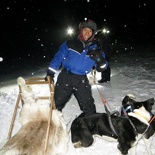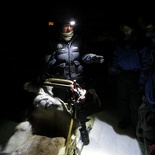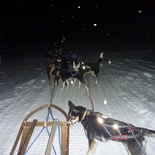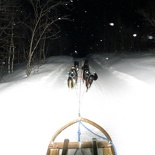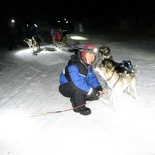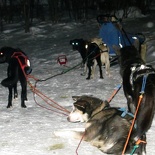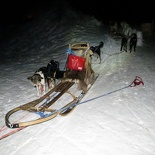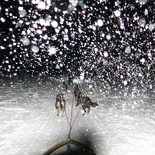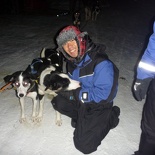What other better way to spend my time in Cross country husky sledding in Tromsø about a hundred kilometers into the snowy plains and mountains. My dog sledding experience started with a gathering with the sledding team by camp Tamok, a remote traditional camp situated in the mountains about a few hours’ drive from the city of Tromsø. There I got to know the dogs who I will be working with for my sledding journey.
I was introduced the huskies who will be on my sled courtesy of the kennel caretaker who showed me around the area. My lead dog is an Alaskan husky, one of my favorite dog breeds to date, with the heavy pulling done by the wheel dogs courtesy of few Malamutes and Siberian huskies on the rear.The dogs are full of life whenever you enter the kennels, always approachable and barking with glee, particularly during feeding time where they get really excessively noisy and always wolf howling. Their caretaker says it’s their way of informing others and celebrating the feast as a pack during their meal times. Like all snow dogs with their thick winter coats, they all live each in their own wooden little huts, preferring to live outdoor than indoors.
The dogs are really friendly, particularly the lead dog Makita over 7 years old, who is also really experienced with the trails in the region, we were also introduced to few additional lead dogs in-training who joined the team on our journey and will also be representing the kennel for an upcoming local dog-sledding competition as led by our lead sled guide and the kennel owner himself.
When left to run, the dogs can easily reach almost 15-20kmph in the clearing, and boy they do can indeed run- fast, often to their death. Thus it is the musher’s responsibility to pace the dogs, knowing each of their dog’s true ability, limits and cater for appropriate rest times ensuring the dogs do not get exhausted or overexert themselves after a run, particularly on long distance sledding comprising of several different run segments as musher checkpoints.
My team comprised of 5 dogs coupled to a compact speed sled for the night with space for one adult in the cargo area. The sled is made out of traditional soft strip oiled wood and is extremely lightweight. The Norwegian huskies here have their own set of instructional language here, unlike the universal gee and haw and for left and right as well as “mush” used by mushers in Alaska. Despite having five dogs to a sled, they do pack some brute force of pulling power on the straights. But do require the some fair bit of deep kicking assistance up on the uphills and even occasionally getting completely off the sled and pushing to aid the dogs on the steep inclines or in deep snow. In comparison, the sled dogs in the annual Iditarod race with teams of at least 12 to 16 dogs for over 8 days, reaching speeds in excess of 20-25kmph.
It often better to let to dogs know verbally via commands to slow them down rather than to apply the drag brakes which I find a pretty wasteful form of resistance one can put on the dogs, this should be used minimally for most part of the journey to keep the dogs from running flat out, unless when braking is absolutely necessary to ensure sled integrity, particularly on rocking terrain, through the forest or on steep down hills. Despite braking, dogs do have quite some pulling power and momentum to overcome it easily, so sometimes you do even need both your feet (i.e your full weight) on the brakes to slow safely on the down hills.
It started snowing quite heavily on some parts of the journey, particularly on the open tundra-like areas, but we have pretty much the reliance of the lead dog’s keen sense of smell to lead the team throughout the journey and back to camp even the toughest of blizzard or in the pitch blackness of the Norwegian night illuminated by the spectacular northern lights of the night.
A journey with man’s best friend indeed.

